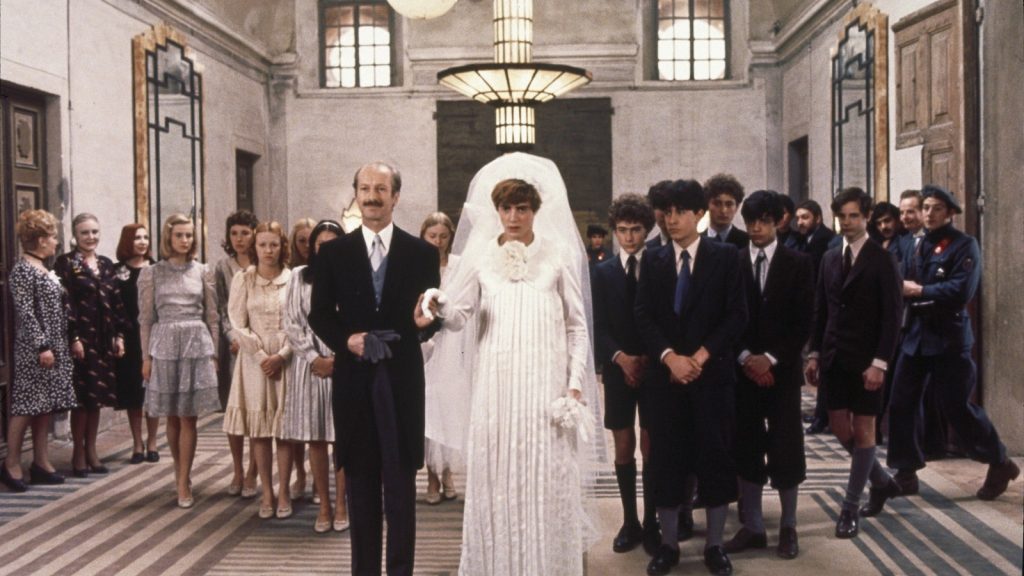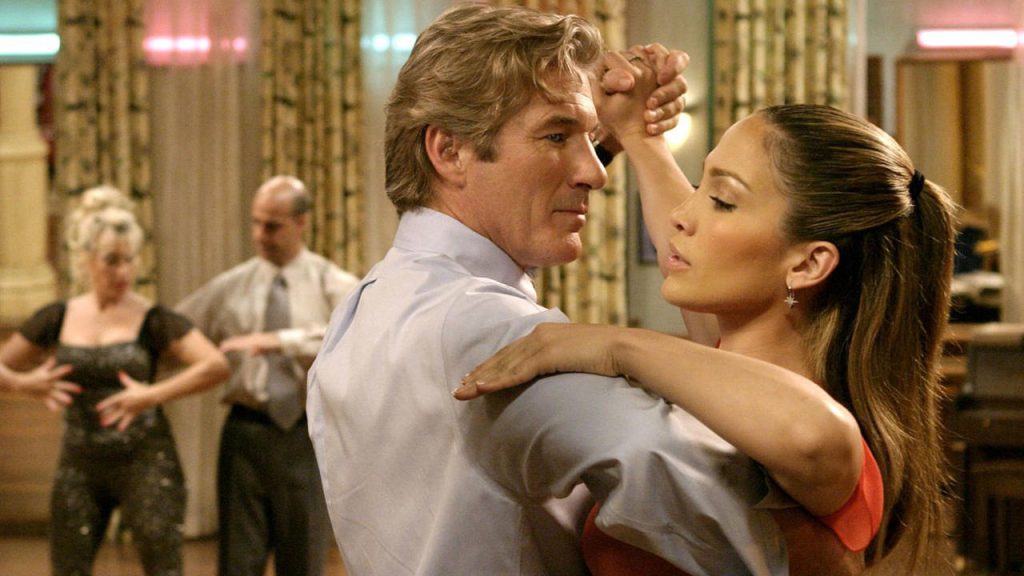“C’mon, Bart! We’re gonna sneak into an R-rated movie. It’s called Barton Fink!”
—The Simpsons, Season 4, Episode 14 (February 4, 1994)
[On Naked Lunch] “I can think of at least TWO things wrong with that title.”
—The Simpsons, Season 7, Episode 20 (March 31, 1997)
Thirty years ago, American audiences were left as confounded as Bart Simpson and friends by two kindred films released four months apart: Joel and Ethan Coen’s ‘40s Hollywood satire Barton Fink and David Cronenberg’s ingenious adaptation of William S. Burroughs experimental novel Naked Lunch.
When Barton Fink hit theaters in August of ’91, three months after premiering at the Cannes Film Festival—where it picked up prizes for Joel Coen and John Turturro (for Best Director and Actor, respectively) on its way to winning the Palme d’Or—the Coens only had two previous features to their name: the grisly neo-noir Blood Simple and the slapstick romantic crime comedy Raising Arizona. The wild inventiveness displayed in those films made the duo amongst the most exciting young directors at the time, but no one knew quite what to expect from them next—themselves included.
The brothers were busy scripting their Prohibition-era gangster picture Miller’s Crossing when they hit a wall—not so much writer’s block as writer’s congestion—and sought to divert themselves with a new script, one that tackled the often grim and pained process that is the writing. Thus was born Barton Fink, the story of a politically fervent, but pretentious and naive New York playwright (Turturro) lured to Hollywood to write a simple B-movie (“Wallace Beery. Wrestling picture. Whatta ya need, a roadmap?”) for one of the major studios, only to face a case of writer’s block so severe that it spirals into a reality-bending, existential meltdown.
Meanwhile, David Cronenberg, who’d established himself as a cult favorite about a decade earlier with a string of perverse, low budget body horror movies in his native Canada, had steadily risen to become one of the most fervently admired directors in all of horror thanks to a couple of crossover hits (The Dead Zone, The Fly). But Cronenberg—who before moving into film sought to be a novelist in the vein of Burroughs and Vladimir Nabakov—never saw himself a horror director exclusively, and by 1991 he’d already moved away from the strict confines of genre with his chilling psychological character study of two years prior, Dead Ringers. Following the critical acclaim of that film, he embarked on his dream project of adapting Burroughs’ seminal—and I mean that in both senses of the word—Beat novel of paranoia, hedonism, addiction and black comic despair.
Rather than attempt to make a faithful adaptation of Naked Lunch—an impossibility, given that the book is comprised of a series of hallucinatory vignettes written in stream of consciousness and reassembled using a cut-up collage technique—Cronenberg instead formed a loose (at times nigh impenetrable) narrative around individual scenes from the novel and several others of Burroughs’s works, combined with some of the more infamous episodes from his biography (namely, the accidental murder of his wife, Joan Vollmer, in 1951).
In Naked Lunch, William S. Burroughs becomes Bill Lee (Peter Weller), a recovering junkie and would-be novelist turned exterminator. Following a relapse into addiction (this time to the bug powder he uses for his work) and the (possibly) accidental murder of his wife Joan (Judy Davis) during an inebriated game of William Tell, he flees to Interzone, a Tangiers-like city beset by conspiracy and swarming with all types of strange creatures, including insect-typewriter hybrids that speak through asshole-mouths, giant insectoid creatures called Mugwumps that excrete an intoxicating substance from penile glands on along their skulls, writhing sex blobs and sex-shifting mad scientists. The wall between reality and fantasy becomes so blurred as to be non-existent, negating any easy metaphorical interpretation of the film.

The same can be said of Barton Fink. Despite the sense of absurdism that underlays everything, as well as a ratcheting sense of Polanski-esque dread, the film sticks to a straightforward narrative (even after a shocking turn of plot at the halfway mark) and stays within the bounds of recognizable reality…right up until the terrifying climax, wherein the walls that prop up said reality burn (literally) to the ground.
The Hollywood of Barton Fink and Naked Lunch’s Interzone could be sister cities, interstitial spaces haunted by the numinous even as they are governed by sinister, but ultimately ridiculous bureaucracies whose goals are as obscure as their logic. Watching both films, one thinks immediately of the work of Franz Kafka. This is unavoidable in Naked Lunch, which directly references the writer, although his overriding presence can also be felt throughout Barton Fink (even if the Coens claim they weren’t all that familiar with him at the time), which plays like an adaptation of The Castle if directed by Preston Sturges.
Kafka is hardly the only literary icon (besides William Burroughs, obviously) whose spirit haunts these films. Both are spilling over with obvious stand-ins for other famous authors—fellow Beats Jack Kerouac and Allen Ginsberg, as well as expatriate writers Paul and Jane Bowles in Naked Lunch, William Faulkner and Clifford Odets—the left-wing playwright turned-Hollywood scribe-turned HUAC fink (get it?) to whom Barton bears a great physical resemblance and whose script for the 1955 showbiz drama The Big Knife shares some noticeable DNA with the Coens’ story–in Barton Fink.
(Just as Cronenberg plucked from several other of Burroughs’s novels—namely Junky, Queer and Exterminator—for Naked Lunch, the Coens cited Otto Friedrich’s non-fiction City of Nets: A Portrait of Hollywood in the 1940s and Jim Thompson’s hotel-set noir A Swell-Looking Babe as inspirations for Barton Fink.)
Key to the success of both films are their leads, Turturro and Weller, who, for all that they embody men of diametrically opposed personalities and philosophies—Barton, all frayed nerves and spastic energy, likes to bloviate on the social responsibility of art; Lee, deadpan to the point of coming off like a zombie, coldly advises his fellow scribes to “exterminate all rational thought”—expertly embody the archetype of the tormented writer while never succumbing to caricature.
But if Turturro and Weller represent the tortured psyche of their respective psychodramas, it’s actress Judy Davis, playing three roles across both films, who is their bleeding heart (emphasis on bleeding). She is the strongest and most obvious cord tying the films together: as Audrey in Barton Fink, she is the Woman Behind the Great Man, never faltering in her empathy or decency no matter how much abuse and exploitation she suffers at the hands of the ‘brilliant’ males surrounding her. As both Joan Lee and Joan Frost In Naked Lunch, she is a sultry siren gone to seed, strung out from years of addiction; men see her as a femme fatale, but in fact she’s a complete innocent.

(Interestingly, ten years earlier, Davis was the first choice to star in Andrzej Zulawksi’s equally enigmatic Possession, which would have also seen her play doppelgangers.)
Despite the disparities in personality and performance—Davis, one of the best and most underrated actresses of our time, shows off her incredible range across her roles here—her characters serve the same purpose in each story. They also suffer the same fate. She is the Muse as sacrifice, her murder in each film acting as the catalyst to the protagonists’ creative breakthrough. This notion is not presented as romantic, but damning, recasting the creative act as a criminal one, while also putting into sharp relief the violent crisis of masculinity at the heart of the Great American Writer/tortured genius mythos. If Barton Fink and Naked Lunch present writing as labor—and they do—Davis stands for all those who have been ground up under its wheels.
Far from mere coincidence or even serendipity, Davis’s casting in both films feels like a case of synchronicity, a concept developed by the founder of analytical psychology Carl Jung (whose story Cronenberg would tackle in his 2011 film A Dangerous Method), and which has been used to interpret meaningful but obscure connections in dreams and memories.
The focus on writing and the presence of Davis are not the only such connections between Barton Fink and Naked Lunch. The films even look like one another: both are painted in the same soft but rich color palettes, all muddy browns, seared yellows and swampy greens; both feature sparse, yet carefully detailed set design that evokes the lonesome spookiness of painter Edward Hopper and, when they dive headlong into surrealism, the violent grotesquerie of Francis Bacon. (Each film perfectly fits the description written by JG Ballard, whose own seemingly unadaptable novel Crash Cronenberg would go on to adapt 5 years later, of David Lynch’s Blue Velvet: “The Wizard of Oz reshot with a script by Franz Kafka and décor by Francis Bacon.”)
Central to both films is the object of the typewriter, weighted with heavy metaphorical significance and numinous power. Respective close-ups of Leev and Barton, during scenes in which they find themselves in the throes of creative productivity, are near mirror images of one-another, both men underlit by a glowing beam of yellow light that seems to emanate from the ghost within their machines.
Ultimately, the movies do differ from one another in key ways: Barton Fink, like Charlie Kaufman’s later meta-narrative screenwriting satire Adaptation, presents writing as hell; in Naked Lunch, writing is a possible pathway out of hell. Yet, their presentation of the writer, as an archetype, is one and the same. Both depict him not merely as a social outsider, but a social undesirable (it’s no coincidence that both Barton and Lee are accused of or homosexuality at several points in their stories), each becoming the target of sinister political forces, as represented by the specter of ascendant fascism in Barton Fink and the merciless Cold War intelligence trade in Naked Lunch, and embodied in each by twin pairs of hardboiled detectives.
The recurrence of these antagonistic figures across both films, like the more central presence of Davis, like the significance of the typewriter, like the shared color palette and set design and everything else, leads us to a stark conclusion: Barton Fink and Naked Lunch aren’t just two films with a lot in common. They are two versions of the same recurring nightmare.



